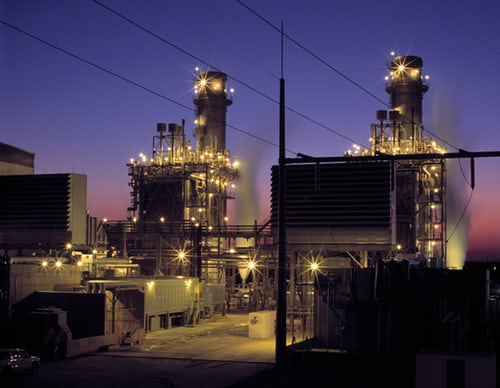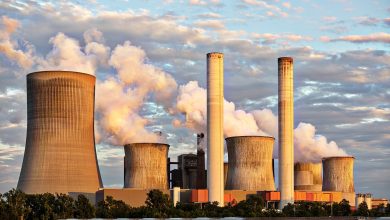How is Natural Gas Refined?

In its natural state, gas is typically mixed with other hydrocarbons and is unsuitable for commercial use. In order to create a composition that can be delivered to users, the gas must be refined. Prior to this, gas is extracted from underneath the Earth’s surface. Whilst new technology is being used to capture natural gas from methanogens, the vast majority of usable natural gas is still extracted from beneath land.
How is Natural Gas Extracted?
Known as thermogenic methane, the natural gas which forms beneath land typically gets trapped by sedimentary basins. When this happens, a large amount of natural gas can form in one location. To access and extract it, engineers drill through the upper layers of rock and create a well.
Traditionally, single vertical drills have been used to extract thermogenic methane. However, the somewhat controversial use of horizontal drilling, acidizing, and hydraulic fracturing or ‘fracking,’ are also used to maximize the amount of natural gas that can be extracted from a single location.
Typically, natural gas can be extracted from three different types of wells: associated gas from oil wells and non-associated or unassociated gas from both gas wells and condensate wells. If crude oil is present, this is removed so that gas remains in its natural state.
Once piped to a refinery, the process of refining the gas and preparing it for consumer use begins.
How is Natural Gas Refined?
The gas consumers use in homes and businesses is known as ‘pipeline quality’. This is a dry natural gas, from which other hydrocarbons have been removed. The pipeline quality gas used by consumers consists predominantly of methane or CH4. However, natural gas is comprised of a range of other elements when it is first extracted. Due to this, the refining process removes these elements, leaving pipeline-quality natural gas in its place.
Depending on the facilities, the process of refining the gas can begin near the well site and continues at centralized refineries or processing plants.
In order to create pipeline-quality natural gas, various steps must be taken to process the material. Due to the dangers associated with processing natural gas, it is vital that strict protocols are followed, both during field processing and in-plant refining.
Firstly, scrubbers and heaters are used close to the well site. These remove large particles and sand from the natural gas and prevent the formation of natural gas by preventing the temperature from dropping too low.
Once this initial process has been completed, the refining procedure begins in earnest. However, the exact method will depend on what type of well the gas has been extracted from and what hydrocarbons are present.

Removal of Oil and Condensate
The makeup of associated dissolved natural gas varies depending on its location, so various methodologies can be used to extract the natural gas from its current state. However, this is almost always done at or near the wellhead, as transporting dissolved natural gas when still combined with coal can be unnecessarily complex, dangerous, and costly.
A conventional separator is the easiest way to separate oil and gas, as it relies on the different weights of the materials to aid in the separation process. Alternatively, a low-temperature separator (LTX) can be used to cool the wet gas and removes low-temperature wet liquid into a separator, leaving other components behind, before heating it again.
Water Removal
Removing free water from natural gas is a relatively simple process but eliminating water vapor in natural gas is more complex. Here, the gas is dehydrating via either absorption or adsorption. Glycol dehydration is a popular method of absorption, whilst solid-desiccant dehydration is the most popular form of adsorption.
Separation of Natural Gas Liquids
Natural gas liquids (NGLs) make up some of the hydrocarbons contained within natural gas. As these NGLs can be valuable in their own right, the extraction process must ensure both the natural gas and hydrocarbons can be preserved for subsequent use. To achieve this, engineers use either absorption or cryogenic expansion. Exposure to absorption oil attracts the NGLs, leaving purer natural gas remaining. Alternatively, the temperature of the gas stream can be reduced to approx. -120°F, which causes the NGLs to condense.

Carbon Dioxide and Sulfur Removal
Natural gas which contains high levels of these elements is sometimes known as sour gas, due to the odor associated with the presence of sulfur. As breathing in these gases can be fatal, it’s essential to remove them from the natural gas before it can be used by consumers. The process of removing Hydrogen Sulfide (H2S) is sometimes known as ‘sweetening’ the gas, as it also removes the unpleasant smell associated with sour gas. Typically, the amine process (also known as the Girder process) is used to sweeten the gas and relies on the absorption of Hydrogen Sulfide (H2S) upon exposure to amine solutions, such as Diethanolamine (DEA) and Monoethanolamine (MEA).
Creating Pure Natural Gas
Once water, oil, condensate, and hydrocarbons have been removed from natural gas, it becomes pipeline quality. In order to be used by consumers, however, the gas needs to be transported to them and stored in central locations until it is needed.
As natural gas can only be extracted from sites where it is naturally present, it is necessary to transport gas across thousands of miles. While some transportation may occur before the gas has been fully refined, the majority of transportation occurs once pipeline quality gas has been produced.
Transporting Natural Gas
Natural gas pipelines enable gas to be transported from one location to another in its natural state. However, moving gas across vast distances via pipelines is unrealistic, expensive, and time-consuming. By modifying the state of the gas, however, it can be transported far more effectively.
To move natural gas a significant distance, it is generally cooled to a liquid state. When exposed to temperatures of around -260°F, the gaseous material becomes a liquid, known as liquidized natural gas or LNG. Once natural gas is in a liquid state, it can be stored or transported to where it will be used by consumers.
On average, liquidized natural gas is around 600 times smaller than its gaseous volume, which means greater quantities can be stored and shipped. In most cases, specialist ports are used to facilitate the international shipment of LNG. Export terminals are used to create LNG from natural gas before it is moved on to a tanker, whilst import terminals revert the LNG to its gaseous form before it is piped to consumers and power plants.
Whilst LNG carriers are used to move large volumes of liquidized natural gas, smaller amounts of LNG may be moved by trucks or ships, providing they meet ISO requirements. As well as being used to store and transport natural gas, LNG can be used in its own right. Some vehicles have LNG tanks, for example, which enable them to produce power via liquidized natural gas inputs. Similarly, some power plants and businesses will use LNG to produce electricity as a form of power.

Delivering Natural Gas to Consumers
Once liquidized natural gas has been reverted back to its gaseous state, it is dry pipeline quality and ready to be used by consumers. Generally, energy companies will take ownership of the gas and store it at their plant facilities before using an extensive pipe network to deliver it to residential homes, commercial units, and other buildings.
However, in some cases, natural gas may go through a further refining process. This takes place on the pipeline system itself, at some point between the centralized gas plant and the consumer. Known as straddle extraction plants, these are situated on the pipeline and serve to refine the gas to an even purer state.
Although the extraction process removes the majority of NGLs, it is usual for some trace elements to remain. This does not prevent the natural gas from being classed as pipeline-quality or being used by consumers. By using additional straddle extraction plants, however, energy companies can remove larger amounts of NGLs and create a purer form of natural gas.
From here, the natural gas continues through the pipeline network so that it reaches the end-user. In addition to the large pipelines which can carry gas from one region to another, smaller pipes act as offshoots and enable consumers to access the gas supply from their homes or workplaces.
Although the process of refining natural gas is complex, it produces fewer harmful emissions than other fossil fuels. Furthermore, it can be far cheaper to extract and refine, which makes it a popular choice with energy providers and companies.
Whilst the finite nature of natural gas does pose a potential risk if too much reliance is placed on it as an energy reserve, the estimated stock of natural gas is over 6,000 trillion cubic feet. With a substantial amount of natural gas still available around the world, it is highly likely companies and consumers will continue to utilize this efficient and low-cost method of power for the foreseeable future.



